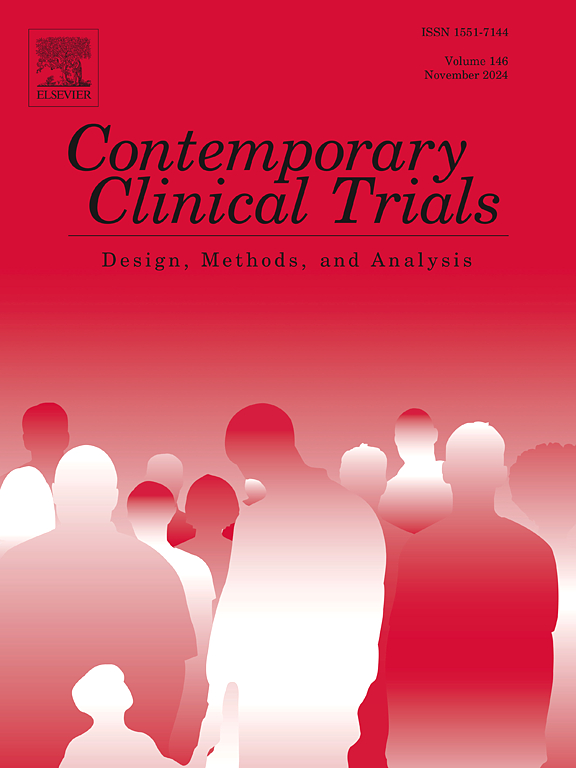Unequal allocation in randomised phase II trials
IF 1.9
3区 医学
Q3 MEDICINE, RESEARCH & EXPERIMENTAL
引用次数: 0
Abstract
Background
Equal allocation is accepted almost universally in the design of randomised clinical trials and it is often assumed that this approach provides the most efficient use of available resources. The design of a phase II study often depend on a binary endpoint with assessments of efficacy made using an odds ratio. In a trial setting however, precision about this odds ratio will only be optimal under equal allocation when there is no difference in the response rates between two treatment arms. A result which typically is of limited clinical interest.
Methodology
For a clinical trial with response rates are px and py in the experimental and control arm respectively, allocation proportions are derived that seek to maximise the precision about an odds ratio in settings where difference between response rates are expected. Sample size calculations are performed and compared to study designs using equal allocation.
Results
Sample size calculations based on the exact methods of Jung and Sargent [8] show that under the same type 1 error rate and power, the required sample sizes using unequal allocation ratios are smaller than those where equal allocation is used. This discrepancy is greater as the control mean response rate tends towards 0 or 1 while the relative treatment effect remain fixed.
Discussion
Trialist involved in the design of phase II studies should take account of possible savings in sample size that may be gained by unequal allocation of patients.
随机II期试验中的不平等分配。
背景:在随机临床试验的设计中,平均分配几乎被普遍接受,并且通常认为这种方法可以最有效地利用现有资源。II期研究的设计通常依赖于使用优势比评估疗效的二元终点。然而,在试验环境中,只有在两个治疗组之间的反应率没有差异的情况下,该比值比的精确度才会达到最佳。这一结果通常具有有限的临床价值。方法:对于实验组和对照组中反应率分别为px和py的临床试验,推导分配比例,寻求在预期反应率差异的设置中最大限度地提高比值比的精度。进行样本量计算,并与使用均等分配的研究设计进行比较。结果:基于Jung和Sargent[8]精确方法的样本量计算表明,在相同的1型错误率和功率下,使用不等分配比例所需的样本量小于使用等分配比例所需的样本量。当对照平均反应率趋向于0或1而相对治疗效果保持固定时,这种差异更大。讨论:参与II期研究设计的试验人员应考虑到不平等分配患者可能节省的样本量。
本文章由计算机程序翻译,如有差异,请以英文原文为准。
求助全文
约1分钟内获得全文
求助全文
来源期刊
CiteScore
3.70
自引率
4.50%
发文量
281
审稿时长
44 days
期刊介绍:
Contemporary Clinical Trials is an international peer reviewed journal that publishes manuscripts pertaining to all aspects of clinical trials, including, but not limited to, design, conduct, analysis, regulation and ethics. Manuscripts submitted should appeal to a readership drawn from disciplines including medicine, biostatistics, epidemiology, computer science, management science, behavioural science, pharmaceutical science, and bioethics. Full-length papers and short communications not exceeding 1,500 words, as well as systemic reviews of clinical trials and methodologies will be published. Perspectives/commentaries on current issues and the impact of clinical trials on the practice of medicine and health policy are also welcome.

 求助内容:
求助内容: 应助结果提醒方式:
应助结果提醒方式:


